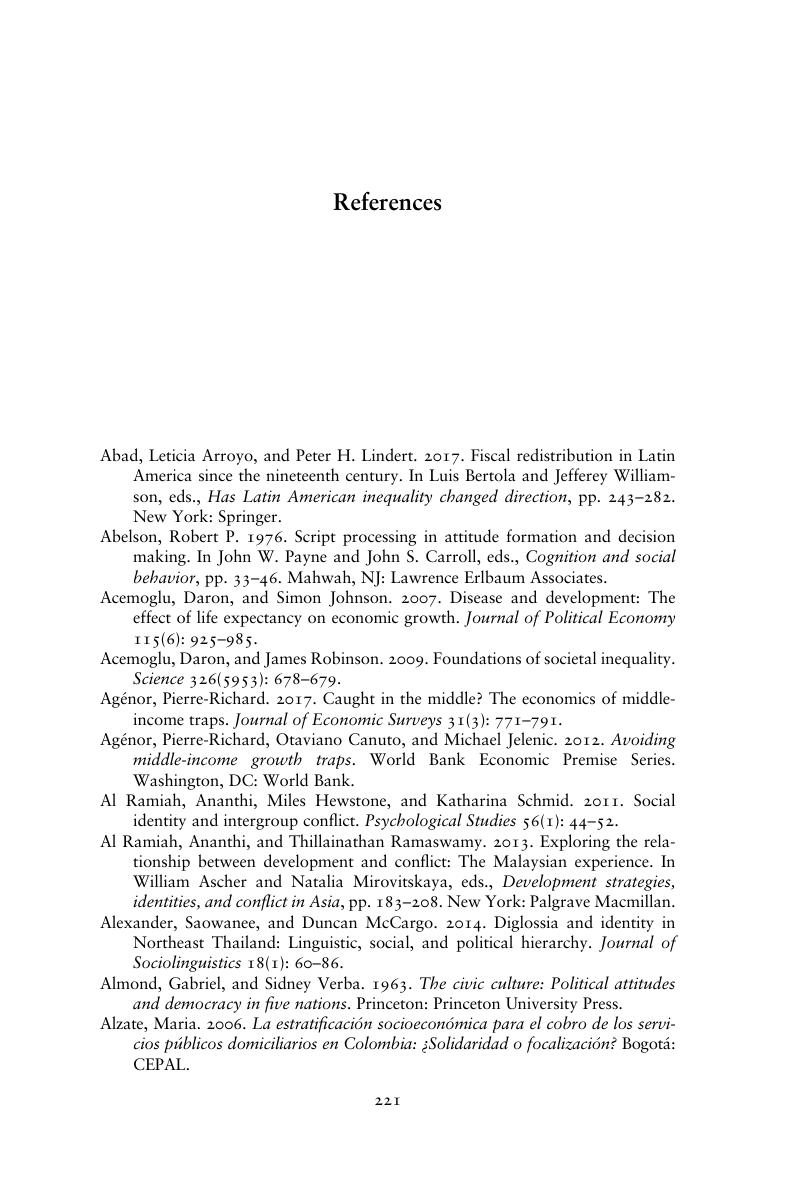Book contents
- The Psychology of Poverty Alleviation
- The Psychology of Poverty Alleviation
- Copyright page
- Dedication
- Contents
- Figures
- Tables
- Acknowledgments
- Part I Introduction
- Part II The Underlying Psychology
- Part III Lessons from Pro-Poor Policy Instruments
- Part IV Overcoming Obstacles in the Policy Process
- References
- Index
- References
References
Published online by Cambridge University Press: 19 September 2020
- The Psychology of Poverty Alleviation
- The Psychology of Poverty Alleviation
- Copyright page
- Dedication
- Contents
- Figures
- Tables
- Acknowledgments
- Part I Introduction
- Part II The Underlying Psychology
- Part III Lessons from Pro-Poor Policy Instruments
- Part IV Overcoming Obstacles in the Policy Process
- References
- Index
- References
Summary

- Type
- Chapter
- Information
- The Psychology of Poverty AlleviationChallenges in Developing Countries, pp. 221 - 242Publisher: Cambridge University PressPrint publication year: 2020



